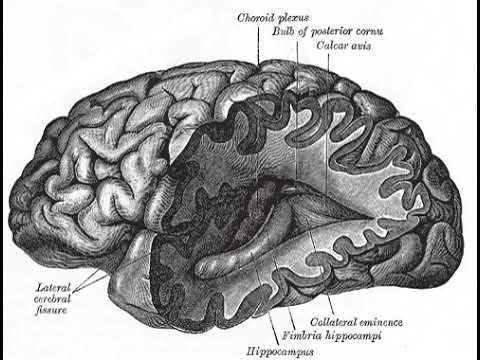This is an audio version of the Wikipedia Article:
https://en.wikipedia.org/wiki/Educational_neuroscience
00:03:28 1 The need for a new discipline
00:05:55 2 Early brain development
00:08:28 3 Can neuroscience inform education?
00:13:33 4 Neuroscience and education: Sample cases
00:13:44 4.1 Language and literacy
00:16:05 4.2 Mathematics
00:21:49 4.3 Social and emotional cognition
00:26:12 4.4 Attention and executive control
00:28:34 5 Neuroscience and education: A bridge too far?
00:32:45 5.1 Challenges to educational neuroscience
00:37:24 5.2 Transforming challenges into opportunities
00:37:51 5.2.1 Scientific challenges
00:40:22 5.2.2 Pragmatic concerns
00:42:40 5.3 A bidirectional relationship
00:43:38 5.4 The role of educators
00:47:21 6 Neuromyths
00:48:23 6.1 Left versus right brain
00:49:15 6.2 Critical periods
00:51:30 6.3 Enriched environments
00:54:15 6.4 Synaptogenesis
00:56:29 6.5 Male versus female brain
00:57:19 6.6 Learning styles
00:58:18 7 See also
Listening is a more natural way of learning, when compared to reading. Written language only began at around 3200 BC, but spoken language has existed long ago.
Learning by listening is a great way to:
– increases imagination and understanding
– improves your listening skills
– improves your own spoken accent
– learn while on the move
– reduce eye strain
Now learn the vast amount of general knowledge available on Wikipedia through audio (audio article). You could even learn subconsciously by playing the audio while you are sleeping! If you are planning to listen a lot, you could try using a bone conduction headphone, or a standard speaker instead of an earphone.
Listen on Google Assistant through Extra Audio:
https://assistant.google.com/services/invoke/uid/0000001a130b3f91
Other Wikipedia audio articles at:
https://www.youtube.com/results?search_query=wikipedia+tts
Upload your own Wikipedia articles through:
https://github.com/nodef/wikipedia-tts
“There is only one good, knowledge, and one evil, ignorance.”
– Socrates
SUMMARY
=======
Educational neuroscience (or neuroeducation, a component of Mind Brain and Education) is an emerging scientific field that brings together researchers in cognitive neuroscience, developmental cognitive neuroscience, educational psychology, educational technology, education theory and other related disciplines to explore the interactions between biological processes and education. Researchers in educational neuroscience investigate the neural mechanisms of reading, numerical cognition, attention and their attendant difficulties including dyslexia, dyscalculia and ADHD as they relate to education. Researchers in this area may link basic findings in cognitive neuroscience with educational technology to help in curriculum implementation for mathematics education and reading education. The aim of educational neuroscience is to generate basic and applied research that will provide a new transdisciplinary account of learning and teaching, which is capable of informing education. A major goal of educational neuroscience is to bridge the gap between the two fields through a direct dialogue between researchers and educators, avoiding the “middlemen of the brain-based learning industry”. These middlemen have a vested commercial interest in the selling of “neuromyths” and their supposed remedies.The potential of educational neuroscience has received varying degrees of support from both cognitive neuroscientists and educators. Davis argues that medical models of cognition, “…have only a very limited role in the broader field of education and learning mainly because learning-related intentional states are not internal to individuals in a way which can be examined by brain activity”. Pettito and Dunbar on the other hand, suggest that educational neuroscience “provides the most relevant level of analysis for resolving today’s core problems in education”. Howard-Jones and Pickering surveyed the opinions of teachers and educators on the topic, and found that they were generally enthusiastic about the use of neuroscientific findings in the field of education, and that they felt these findings would be more likely to influence their teaching methodology than curriculum content. Some researchers take an intermediate view and feel that a direct link from neuroscience to education is a “bridge too far”, but that a bridging discipline, such as cognitive psychology or educational psychology can provide a neuroscientific basis for educational practice. The prevailing opinion, however, appears to be that the link between education and neuroscience has yet to realise its full potential, and whether through a third research discipline, or through the development of new neuroscience research paradigms and projects, the time is right to apply neuroscientific research findings to education in a practically meaningful way.Several academic institutions around the world are beginning to devote r …
Subhajit Sahu
Source



